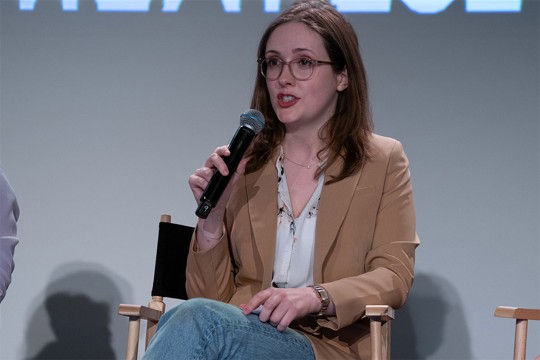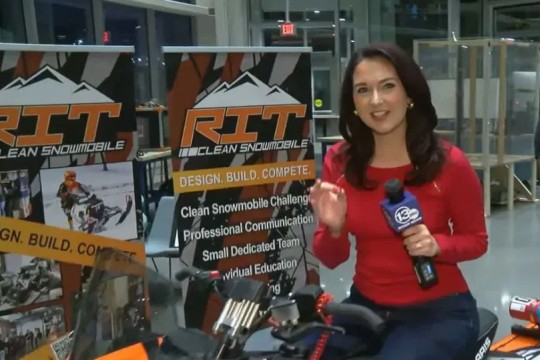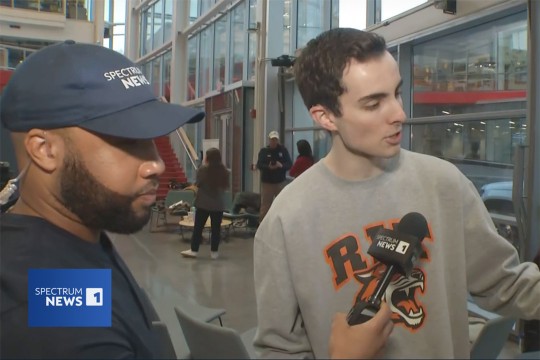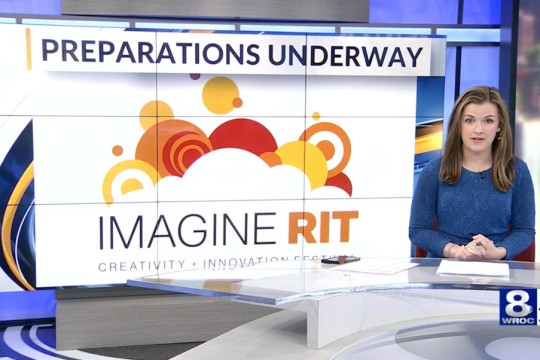RIT microelectronic engineering sets program agenda to community outreach and education
A. Sue Weisler
A group of area teachers look on as a microchip fabrication process is demonstrated during an outreach seminar for K-12 educators held at RIT last fall.
The Department of Microelectronic Engineering has created a comprehensive outreach program that provides training in microelectronics to middle- and high-school teachers, including daylong training sessions at RIT featuring classroom instruction and exposure to equipment and test facilities in numerous campus labs. The department also helps teachers and schools incorporate microelectronics instruction into science and mathematics classes and set up engineering labs to enhance classroom teaching.
RIT has long been an innovator in research and education in microelectronics and its Department of Microelectronic Engineering, the first in the nation devoted to the discipline, celebrated its 25th anniversary in 2007. Early on, the department recognized the need to increase understanding of microelectronic engineering in the broader community and specifically knowledge of the field in elementary and secondary education. This work strengthens the body of high school seniors from which to recruit and enhances the overall educational and research efforts of the department.
“We realized that our ability to attract top students into the program and improve the overall development of our microelectronic engineering initiatives was dependant in part on introducing students to the discipline at an early age,” notes Santosh Kurinec, head of the Department of Microelectronic Engineering at RIT. “This required interaction both with students and with elementary and secondary teachers who, we found, wanted to learn more about how to improve teaching in engineering.”
The program also offers a number of on- and off-campus events and seminars for elementary and high-school students, including a tour and demonstration of the microelectronic engineering facilities each spring. Specific initiatives are also targeted at 11th and 12th graders who are beginning to make decisions regarding colleges and their future career paths.
“Our outreach program has focused on increasing enthusiasm for and understanding of microelectronic engineering among teachers and students,” says Elaine Lewis, the department’s outreach specialist.
“Through this work we ultimately strive to improve overall science and mathematics instruction and ultimately increase the number of college students going into engineering disciplines.” Kurinec adds that the outreach program has provided significant benefits for RIT faculty and students who have assisted in developing outreach curricula and in integrating teaching and training into elementary and secondary classes.
For example, Nathanial Kane, a fifth-year microelectronic engineering major, completed a service-learning assignment through the program in the spring of 2006 with Irondequoit High School, where he served as an assistant to physics teacher Thomas Schulte. Working in senior physics and advanced-placement courses, Kane helped Schulte develop course curriculum, assisted in class lectures and tutored students who needed additional instruction. He also later served as a mentor to several of his former students who eventually came to RIT.
“Nate was an excellent addition to the class and provided a new perspective on the subjects we covered,” adds Schulte, himself an alum of microelectronic engineering program. “He is a perfect example of the benefits outreach programs can provide in enhancing the educational experiences of everyone involved.”
The department’s outreach program is funded through an education grant from the National Science Foundation and Kurinec hopes to expand training and education efforts and add additional schools from throughout New York state to the program. “It is our hope that this program can serve as a model for additional university efforts across the country,” says Kurinec. “Through this type of interaction we can enhance educational programs at all levels and further promote engineering and science to the next generation of students.”















